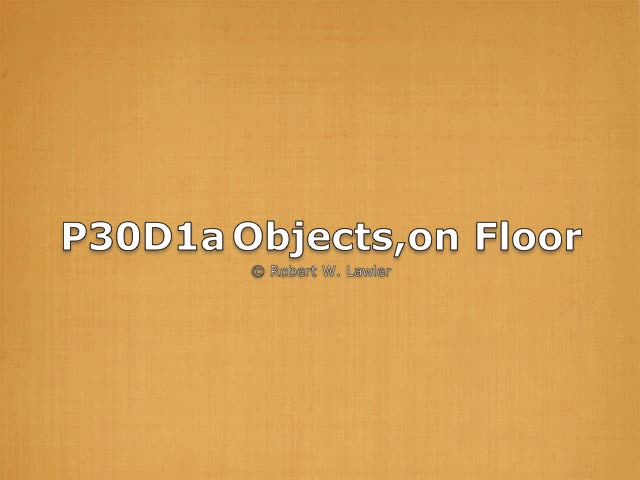
P030D1a Clip Notes
| Notes:n:nn | by Analyst, 9/17/2025 |
| Setting,Props | Cedar Hall, Family Room: subset of objects, 3 each of sticks, blocks, cups |
| Actors,Aims | Peggy; Bob on camera, Mom helping. |
| Episode A: [00:00:04] | Mom: [seated on some bedding, Peggy on her stomach] Peggy. Peggy: [bawling at full throttle] |
| Episode B: [00:00:08] | Bob: Hey, Peggy. Here comes the stuff, Peggy. [sets down 3 sticks, 3 cups, 2 alphabet blocks] Peggy: [stops bawling on seeing the set of objects] Huh? [begins crawling to them] |
| Episode C: [00:00:16] | This minute of silence is an opportunity for action detailing |
| Episode D: [00:01:16] | Bob: I’d already mentioned that when the things went down, she saw the smaller cup had fallen within the larger. You think Peggy will notice that? Mom: I don’t know. Bob: The aim here is to see, of course, when she starts putting things inside of other things. So maybe seeing that thing by accident will give her a hint that that might be a good thing to try. |
| Episode E: [00:01:46] | another silence opportunity: |
| Episode F: [00:04:20] | Bob: So the way she chews in that little thing (a cup) is the same way she chewed on her cup (in P030C) going from the top end (true for each cup mouthed) [end] |
| Episode | |
| Summary by AI |
Participants: Mom, Bob, and infant Peggy. Initial state: Peggy is crying loudly. Bob sets out objects: 3 sticks, 3 cups, and 2 alphabet blocks. Upon seeing the objects, Peggy stops crying and crawls toward them. Noted event: a smaller cup had fallen inside a larger cup. Bob wonders if Peggy will notice the cup-within-cup arrangement. Experimental aim: observe when Peggy begins intentionally putting objects inside other objects; accidental nesting might prompt this behavior. There are extended silent periods intended for action detailing (not transcribed). Observation on mouthing: Peggy chews on a cup the same way as in session P030C, starting from the top end; this pattern holds for each cup she mouths. |
| Narrative by AI |
A brief observation session captured a moment of infant exploration and discovery. Seated on bedding with a small assortment of everyday objects—three sticks, three cups, and two alphabet blocks—an infant named Peggy shifted quickly from distress to engagement. As the items were placed within view, her crying stopped and she began to crawl toward them, signaling how a simple change in the environment can redirect attention and behavior. The setup was modest but intentional. One of the smaller cups had fallen inside a larger cup, creating an accidental example of containment. Observers wondered whether Peggy would notice this arrangement and whether it might prompt her to experiment with placing objects inside one another. The goal, stated plainly, was to see when she might begin to explore “insides” and nesting—an early step toward understanding spatial relations and object properties. Much of the session unfolded in quiet, giving Peggy time to explore without intervention. These silent stretches offered room for spontaneous action: reaching, grasping, mouthing, and shifting focus among objects. Such pauses matter in observation, as they allow emerging behaviors to surface naturally, rather than being driven by prompts or instructions. The cups drew particular interest. Peggy mouthed a small cup in a way that mirrored her previous interactions with a similar object: starting at the rim, working from the top end. This repeated pattern suggested a consistent approach to exploring object edges and shapes, a common feature of early sensorimotor learning. The behavior was neither discouraged nor redirected; it was noted as part of her current repertoire of strategies. Overall, the session highlighted how simple materials and unhurried time can reveal early problem-solving and curiosity. A chance cue—the nested cups—served as a quiet invitation to try something new, while familiar actions like mouthing offered a window into ongoing developmental processes. By watching closely and letting the infant lead, observers documented the small but meaningful steps that build toward more complex explorations. |
| Link Index | Panel P030, Language Development, Object Exploration, Social Interactions |
| Themes, Interplay |
